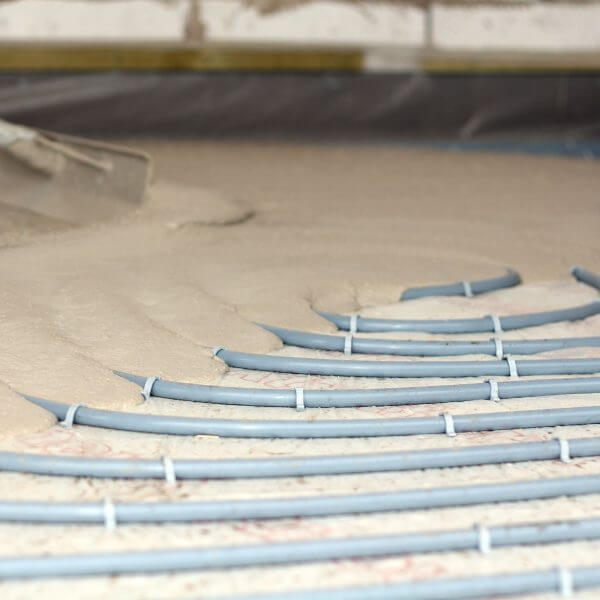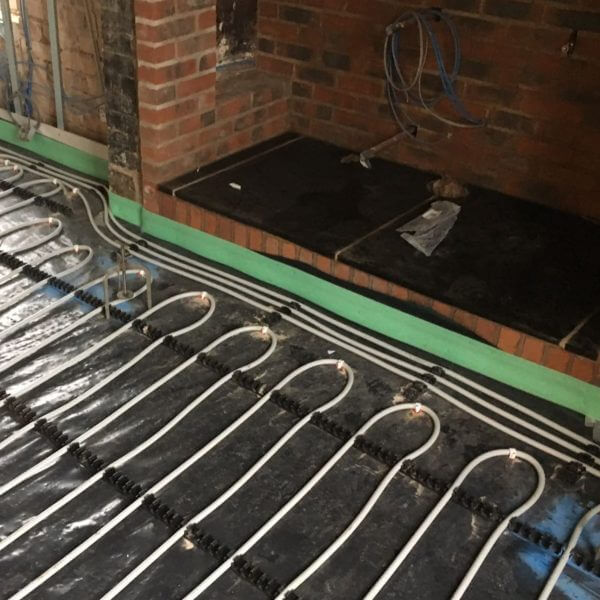Laitance Removal / Screed Sanding Preparation For Tiled Underfloor Heating
Before laying tiles for tiled underfloor heating, or other finishes on to a calcium sulphate screed one of the most important tasks is the removal of laitance. In the video above you can see this process being carried out at a property preparing for underfloor heating in Leicester.
Why do Tiles Fail on Liquid Screed?
Tiles may fail if you did not sand off laitance from a calcium-based anhydrite screed. With tiled underfloor heating, you need to use tiles and adhesive suitable for use with underfloor heating, else the tiles will de-bond or crack.
What is Laitance?
Laitance is a weak layer of fine particles deposited on the surface of the screed as the anhydrite cures. This layer is too weak to tile onto and can also slow down drying times. Laitance should be removed by light abrasion using a suitable sanding machine.
Does Liquid Screed Need Sanding?
Cement-based screeds do not need sanding once they have cured and dried. Calcium-based screeds will build up a small powdery layer called laitance, that will require sanding.
Does Liquid Screed Contain Calcium?
Gypsum and anhydrite liquid screeds contain calcium sulphate. This allows it to cure and dry fast, and provide better heat transference for underfloor heating installations.
When Should Sanding be Done?
The best time to do this is 7 to 14 days after the installation of the screed. It will also help to dry the screed as it allows the moisture to escape.
Can screed be polished?
Yes, liquid screed can be polished to create a professional floor that does not need a floor covering. You will need to apply a thin overlay in order to create the polished floor effect.




Where To Find Us